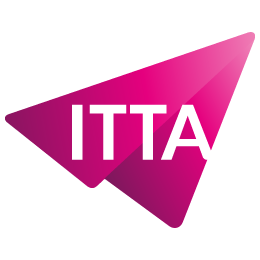Home > Trainings > Development > Object Oriented Programming > Object Oriented Analysis and Design – Fundamentals
This object-oriented design training course provides a solid understanding of modern analysis and modeling methods. Participants learn how to effectively represent software requirements through use cases and UML diagrams. This approach enhances communication between teams and ensures the development of reliable and scalable systems.
Object-oriented design has become essential for creating robust and scalable software. With a use case–driven approach, this course offers a practical and immediately applicable method. Participants will learn how to use UML to visually represent processes and clarify architectural choices. Each module combines theory with concrete examples to make application easier in a professional context.
Module 1: Unified Modeling Language and object-oriented concepts
Module 2: Architectural analysis
Module 3: Analysis case study
Object-oriented design is based on a structured approach that allows complex systems to be modeled into simpler units. These units, called objects, represent real or abstract entities with their own characteristics and behaviors. The goal is to make software more modular, more reusable, and easier to maintain over time.
In companies, this method has become a standard because it improves communication between development teams and stakeholders. Thanks to a visual language like UML, it becomes easier to represent requirements, interactions, and the overall architecture of a software project. This approach also reduces risks of errors early on and improves the quality of the final product.
Taking an object-oriented design training provides a solid foundation to analyze and design software. Participants gain a better understanding of how to translate functional requirements into clear and usable models. They also learn how to structure a project by identifying relationships between classes, objects, and behaviors.
This type of training also provides tools to make better architectural decisions. It helps in choosing between different solutions depending on technical and functional constraints. Finally, it improves collaboration in environments where multiple stakeholders contribute to the development of the same application.
Object-oriented design relies on several key principles. Abstraction allows focusing on the essential aspects of a system without getting lost in details. Encapsulation ensures data protection by limiting direct access. Inheritance encourages reusing existing components, while polymorphism improves flexibility and adaptability of software.
These notions are essential for any professional who aims to design scalable systems. By mastering these mechanisms, it becomes possible to create robust software architectures and reduce the effects of increasing project complexity.
Modeling is a central aspect of object-oriented design. UML (Unified Modeling Language) is the most widely used standard for visually representing a system. It allows creating different types of diagrams, each serving a specific purpose. For example, use case diagrams show interactions between users and the system. Class diagrams describe the structure of objects and their relationships. Finally, sequence diagrams illustrate exchanges between components over time.
Mastering UML provides teams with a common language. It facilitates communication between developers, architects, and business stakeholders. Moreover, it ensures effective project documentation and reduces misunderstandings during development phases.
In today’s software projects, object-oriented design is applied in various domains. It is used in the development of web, mobile, or embedded applications. It is also key in complex information systems where modularity and maintenance are essential. For example, in an order management project, each entity such as customer, product, or order can be modeled as an object. This breakdown makes the system clearer and more scalable.
Companies favor this method because it reduces maintenance costs. A well-designed software system can be adapted more easily to future evolutions without requiring a full redesign.
Object-oriented design training is not limited to theoretical knowledge. It provides hands-on experience through concrete case studies. Participants work on real-world project examples, allowing them to develop reflexes directly applicable in their professional environment. They leave with a clear method to approach new software projects and improve the quality of their designs.
This expertise becomes a competitive advantage, especially for developers, architects, and analysts who want to strengthen their skills and advance in their careers.
What is the difference between object-oriented analysis and design?
Object-oriented analysis focuses on understanding needs and interactions. Design translates these needs into a workable technical architecture.
Why is UML essential in object-oriented design?
UML provides a universal visual language that improves communication between teams and ensures clear, shared documentation.
Which professionals benefit most from this training?
Analysts, software architects, and developers are the most concerned, but any professional involved in software design can benefit.
Is programming knowledge required before taking this course?
A basic understanding of object-oriented programming is helpful, but the training remains accessible to any professional with a technical background.
What advantages does this approach bring to companies?
It enables the creation of more reliable software, easier to maintain, and able to quickly adapt to market changes.

Nous utilisons des cookies afin de vous garantir une expérience de navigation fluide, agréable et entièrement sécurisée sur notre site. Ces cookies nous permettent d’analyser et d’améliorer nos services en continu, afin de mieux répondre à vos attentes.
Monday to Friday
8:30 AM to 6:00 PM
Tel. 058 307 73 00
ITTA
Route des jeunes 35
1227 Carouge, Suisse
Monday to Friday, from 8:30 am to 06:00 pm.